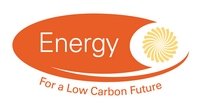Options Choices Actions - UK scenarios for a low carbon energy system
Abstract:
The work we have undertaken at the ETI has shown the importance of a systems approach to energy planning – sectors and their infrastructure cannot be developed in isolation. Therefore one of the first acts of the ETI was to establish ESME, our Energy System Modelling Environment, which is an internationally peer-reviewed national energy system design and planning tool.
The UK energy environment comprises a complex set of needs, technologies and choices. We first conceived ESME for our own technology investment purposes, but over the years it has developed into a powerful energy system model for the UK.
Our refinement and development of the model with input from our private and public sector membership has allowed us to develop illustrative scenarios for the UK’s energy transition out to 2050. We present here two representative scenarios of the future which each show pathways the UK can follow, but importantly highlight the changes the UK needs to consider and make to its energy infrastructure – this is unavoidable.We hope the scenarios inform and provoke debate, and progress thinking about how we power the UK in the future.
- The UK can achieve an affordable transition to a low carbon energy system over the next 35 years. Our modelling shows abatement costs ranging from 1-2% of GDP by 2050, with potential to achieve the lower end of this range through effective planning
- The UK must focus on developing and proving a basket of the most promising supply and demand technology options. Developing a basket of options (rather than a single system blueprint) will help to limit inevitable implementation risks
- Key technology priorities for the UK energy system include: bioenergy, carbon capture and storage, new nuclear, offshore wind, gaseous systems, efficiency of vehicles and efficiency/heat provision for buildings
- It is critical to focus resources in the next decade on preparing these options for wide-scale deployment. By the mid-2020s crucial decisions must be made regarding infrastructure design for the long-term
- CCS and bioenergy are especially valuable. The most cost-effective system designs require zero or even “negative” emissions in sectors where decarbonisation is easiest, alleviating pressure in more difficult sectors
- High levels of intermittent renewables in the power sector and large swings in energy demand can be accommodated at a cost, but this requires a systems level approach to storage technologies, including heat, hydrogen and natural gas in addition to electricity
Publication Year:
2015
Publisher:
ETI
Author(s):
Coleman, J., Heaton, C., Day, G. and Milne, S.
Energy Categories
Class Name:
Subclass Name:
Category Name:
Language:
English
File Type:
application/pdf
File Size:
3451032 B
Rights:
Energy Technologies Institute Open Licence for Materials
Rights Overview:
The Energy Technologies Institute is making this document available to use under the Energy Technologies Institute Open Licence for Materials. Please refer to the Energy Technologies Institute website for the terms and conditions of this licence. The Information is licensed "as is" and the Energy Technologies Institute excludes all representations, warranties, obligations and liabilities in relation to the Information to the maximum extent permitted by law. The Energy Technologies Institute is not liable for any errors or omissions in the Information and shall not be liable for any loss, injury or damage of any kind caused by its use. This exclusion of liability includes, but is not limited to, any direct, indirect, special, incidental, consequential, punitive, or exemplary damages in each case such as loss of revenue, data, anticipated profits, and lost business. The Energy Technologies Institute does not guarantee the continued supply of the Information. Notwithstanding any statement to the contrary contained on the face of this document, the Energy Technologies Institute confirms that it has the right to publish this document.
Further information:
N/A
Region:
United Kingdom
Related Dataset(s):
No related datasets
Related Project(s):
Related Publications(s):
An ETI Perspective - Low carbon challenges for UK energy networks
ETI Insights Report - UK Networks Transition Challenges - Electricity
ETI Insights Report - UK Networks Transition Challenges - Gas
ETI Insights Report - UK Networks Transition Challenges - Heat
ETI Insights Report - UK Networks Transition Challenges - Hydrogen
Enabling efficient networks for low carbon futures: Options for governance and regulation
Infographic - UK Networks Transition Challenges
Network Capacity - Barriers to Application of Multi-Terminal HVDC in the UK: WP2 Task 4
Network Capacity - Executive Summary
Network Capacity - Final Project Summary (Work Packages 1 & 2 a.k.a. WP1 Task 8)
Network Capacity - One Page Summary
Network Capacity - Performance of Onshore Multi-Terminal HVDC: WP2 Tasks 2 & 3
Network Capacity - Request for Proposal
Network Capacity -WP1 Task 2: Impact of Active Power Flow Management Solutions



